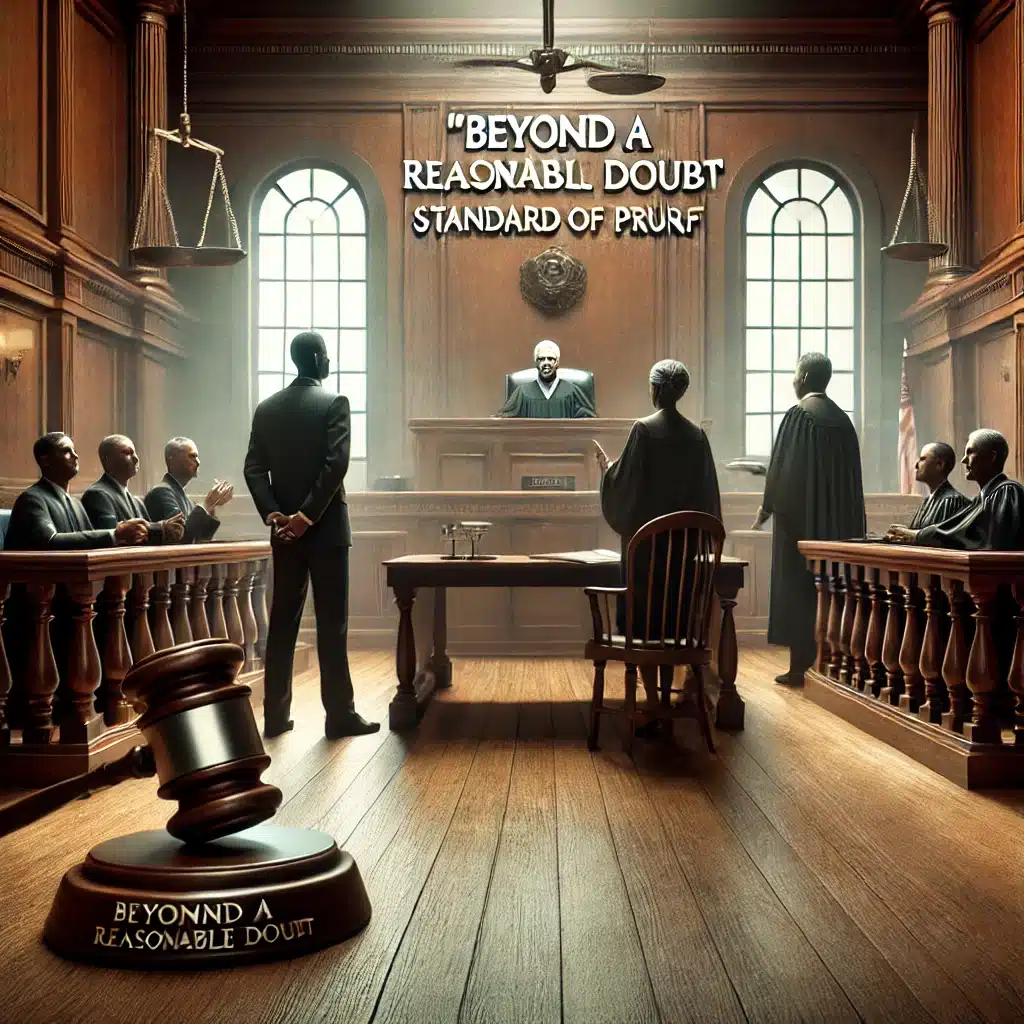The Brett Kavanaugh hearings captured national attention, sparking intense debate over the allegations against him. If the case had gone to court, the outcome could have been very different. In this article, we’ll explore the standards of proof and how they would apply to a Kavanaugh hearing court outcome. Understanding these legal benchmarks is crucial for assessing the strength of any case.
Kavanaugh Hearing Court Outcome: Understanding Standards of Proof
Definition and Importance

Standards of proof define the level of convincing required to win a case. These standards ensure fairness in the legal system by setting clear benchmarks for the evidence needed to support a claim. Understanding these standards helps evaluate the strength of any legal argument.
Three Main Standards of Proof
Beyond a Reasonable Doubt
This highest standard of proof applies to criminal cases. The prosecution must prove the defendant’s guilt so thoroughly that there is no reasonable doubt left. Any uncertainty, no matter how small, should result in a not guilty verdict.
Clear and Convincing Evidence
This standard, used in family law cases, requires the evidence to be highly and substantially more likely to be true than untrue. The judge or jury must have a firm belief in the truth of the claims presented.
Preponderance of the Evidence
The lowest standard of proof applies to civil cases. To meet this standard, the evidence must show that something is more likely true than not. Even a slight edge in the credibility of evidence can tip the scale in favor of one party.
Types of Evidence in Legal Proceedings
Sworn Testimony
Witnesses or parties provide sworn testimony, which serves as a primary type of evidence. Their statements under oath aim to convince the judge or jury of the truth.
Documentary Evidence
Documents like photos, videos, emails, and text messages play a crucial role in court. They offer tangible proof to support or refute claims.
Medical Records
Medical records provide essential information, especially in personal injury and family law cases. They offer objective evidence of physical or mental conditions.
Criminal Records
Criminal records can influence a case by providing background information on the parties involved. They may impact credibility or reveal patterns of behavior.
Digital Evidence
Web history, social media posts, and other digital footprints serve as valuable evidence. They can corroborate timelines, alibis, and behaviors.
Education Records
Education records might come into play in cases involving custody, employment disputes, or personal injury claims. They offer insights into the backgrounds and capabilities of individuals.
Understanding these standards of proof and types of evidence can clarify how a Kavanaugh hearing court outcome might differ in various legal settings.
Kavanaugh Hearing Court Outcome: Beyond a Reasonable Doubt
Explanation of the Highest Standard
The highest standard of proof, “beyond a reasonable doubt,” requires that the evidence presented must leave no room for reasonable uncertainty about the defendant’s guilt. This ensures that the accused is not convicted unless the jury or judge feels morally certain of their guilt.
Application in Criminal Cases
In criminal cases, this standard protects individuals from wrongful convictions due to the severe consequences involved, such as imprisonment or fines. The prosecution must provide compelling and unequivocal evidence to meet this burden.
Hypothetical Scenario: Kavanaugh Allegations
If criminal charges had been filed against Brett Kavanaugh, the prosecution would need to prove his guilt beyond a reasonable doubt. This means any reasonable doubt, even a slim one, would require a not guilty verdict. The defense would focus on creating enough doubt about the allegations to prevent a conviction.
Clear and Convincing Evidence
Description of the Intermediate Standard

“Clear and convincing evidence” is a higher standard than the preponderance of the evidence but lower than beyond a reasonable doubt. It requires that the evidence presented be highly probable and persuasive.
Usage in Family Law and Civil Matters
This standard often applies in family law cases, such as custody disputes, and certain civil matters where the stakes are high but not as severe as criminal cases. The judge or jury must feel convinced that the evidence is highly likely to be true.
Analysis: Kavanaugh Case Context
In some contexts, the Kavanaugh case might have been judged under this standard. For instance, in a family law matter or a specific civil case, the burden of proof would have required the evidence to be clear and convincing. This means the judge or jury would need to find the allegations highly likely to be true, though not to the absolute certainty required in criminal cases.
Kavanaugh Hearing Court Outcome: Preponderance of the Evidence
Explanation of the Lowest Standard
The preponderance of the evidence is the lowest standard of proof. It requires showing that something is more likely true than not. This means the evidence must tip the balance slightly in favor of one side.
Common Use in Civil Cases
This standard is most common in civil cases. The burden is to demonstrate that the claim is more probable than not. Even if both sides present convincing arguments, the side with slightly more persuasive evidence wins.
Hypothetical Scenario: Kavanaugh Civil Lawsuit
If the Kavanaugh case had been a civil lawsuit, the court would assess the evidence to see if the allegations were more likely true than not. The plaintiff would need to present enough evidence to make the accusations more believable than the defense’s arguments.
Hypothetical Court Scenarios
Criminal Court

In a criminal court, evaluating the Kavanaugh allegations would require proof beyond a reasonable doubt. The prosecution would need to provide irrefutable evidence of guilt. Any reasonable doubt would result in an acquittal.
Civil Court
In a civil court, the Kavanaugh case would be considered under the preponderance of the evidence standard. The plaintiff would only need to show that the allegations were more likely true than not. This lower burden of proof makes it easier to win a civil case.
Family Court
In family court, the clear and convincing evidence standard would apply. The court would require a high probability of truth in the allegations. The judge or jury would need to be firmly convinced of the claims, though not to the absolute certainty required in criminal cases.
Conclusion
Understanding the different standards of proof helps in evaluating legal cases like the Kavanaugh hearing. The outcome of a court case depends significantly on the standard of proof applied. Knowing these standards can clarify how a case might unfold in various legal settings.
Other Related Articles:
- What Questions Are Asked In a Child Support Hearing In Texas?
- Navigating the CPS Final Hearing: Your Guide to Protecting Your Parental Rights
- Essential Tips when Preparing for Your Divorce Hearing in Texas
- What Is a Status Hearing in the Context of a Child Protective Services Case?
- A Step-by-Step Timeline of a Typical Divorce Court Hearing in Texas
Bryan Fagan, a native of Atascocita, Texas, is a dedicated family law attorney inspired by John Grisham’s “The Pelican Brief.” He is the first lawyer in his family, which includes two adopted brothers. Bryan’s commitment to family is personal and professional; he cared for his grandmother with Alzheimer’s while completing his degree and attended the South Texas College of Law at night.
Married with three children, Bryan’s personal experiences enrich his understanding of family dynamics, which is central to his legal practice. He specializes in family law, offering innovative and efficient legal services. A certified member of the College of the State Bar of Texas, Bryan is part of an elite group of legal professionals committed to ongoing education and high-level expertise.
His legal practice covers divorce, custody disputes, property disputes, adoption, paternity, and mediation. Bryan is also experienced in drafting marital property agreements. He leads a team dedicated to complex family law cases and protecting families from false CPS allegations.
Based in Houston, Bryan is active in the Houston Family Law Sector of the Houston Bar Association and various family law groups in Texas. His deep understanding of family values and his professional dedication make him a compassionate advocate for families navigating Texas family law.




